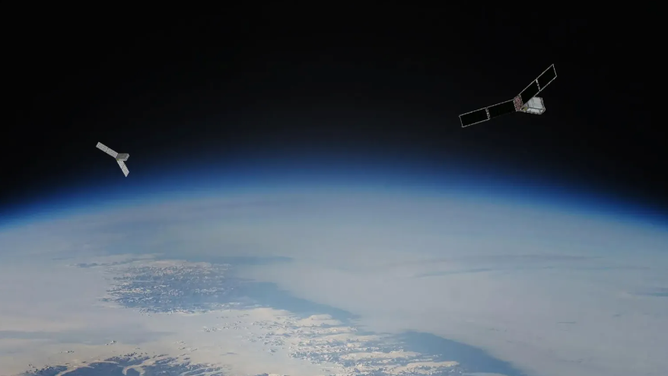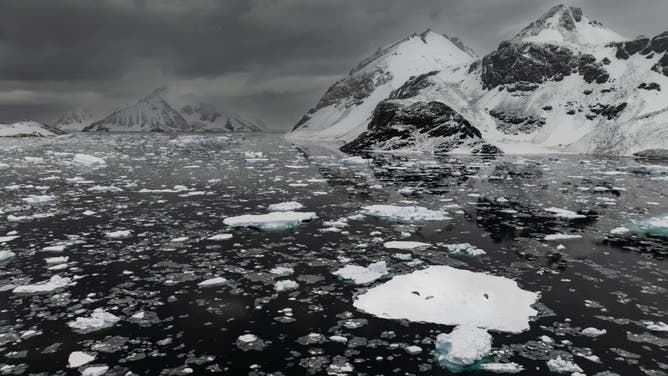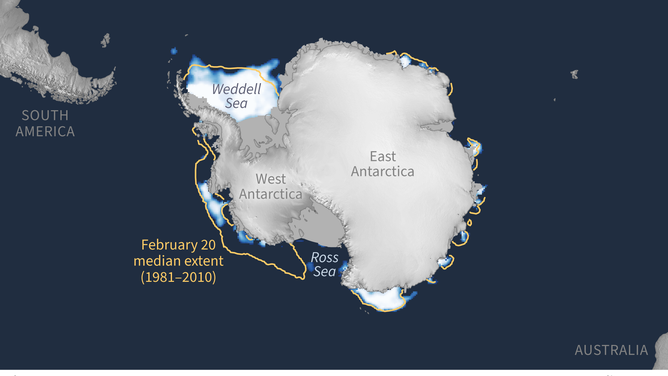Twin NASA satellites aim to study heat emissions at Earth’s poles, improve future climate models
NASA’s shoebox-sized satellites will measure the Arctic and Antarctic regions and how much heat is absorbed and released. Scientists say PREFIRE measurements will help them to understand climate processes.
'Catastrophic breeding failure' of penguins caused by low sea ice in Antarctica
FILE VIDEO: Record-low levels of sea ice in western Antarctica in late 2022 led to the breeding failure of four emperor penguin colonies, according to a study published on Thursday. (Courtesy: European Commission, Copernicus SENTINEL-2 via Storyful)
Rocket Lab is preparing to launch the first of two tiny NASA spacecraft designed to study how heat is emitted and absorbed from Earth's polar regions, which influences global weather patterns.
NASA's Polar Radiant Energy in the Far-InfraRed Experiment, or PREFIRE, is a pair of shoebox-sized spacecraft, each carrying one instrument and measuring the poles about six hours apart.
"We'll be using the two CubeSats to make measurements several hours apart, taking the difference between those measurements, and trying to understand how the processes occurring in the Arctic are actually affecting emissions from the Arctic," said Tristan L’Ecuyer, PREFIRE principal investigator with the University of Wisconsin-Madison.
The first PREFIRE satellite launches on May 22 from New Zealand on Rocket Lab's Electron rocket. The launch window opens at 3:15 a.m. ET (19:15 local time).

An artist’s concept of the PREFIRE Cubesats orbiting Earth. Credits: NASA/JPL-Caltech
L’Ecuyer said the PREFIRE team hopes to have publicly available data for climate researchers by this summer, including cloud observations, ice sheet measurements and Arctic moisture.
ANTARCTICA’S ‘DOOMSDAY GLACIER’ IS MELTING AWAY DIFFERENTLY THAN SCIENTISTS FIRST THOUGHT
The mission comes at a critical time. Recently, L'Ecuyer said, "alarming changes in Antarctica" have begun destabilizing the ice sheet.
Antarctica saw an increase in sea ice for years, while the Arctic was on a steady decline. In 2016, there was a shift, and according to NASA, sea ice at both poles is declining. Most recently, ice coverage around Antarctica shrank to near-historic lows for the third year.

An aerial view of seals resting on an ice mass in Antarctica on April 11, 2024. (Photo by Sebnem Coskun/Anadolu via Getty Images)
PREFIRE will measure the heat radiated into space at longer wavelengths of light from both polar regions. This part of the far infrared spectrum has not yet been observed in the poles, which comprise about 60% of the energy in the Arctic and Antarctic regions.
Overall, this heat transfer from the poles influences global weather and climate.
HOW SCIENTISTS BELIEVE THE LOSS OF ARCTIC SEA ICE WILL IMPACT US WEATHER PATTERNS
"This is critical because it actually helps to balance the excess heat that's received in the tropical regions and really regulate the temperature," he said. "The process of getting the heat from the tropical regions to the polar regions is actually what drives all of our weather around the planet."

Smallest Antarctic sea ice extent in 2024.
(NOAA)
NASA's Earth Science Division Director Karen St. Germain said PREFIRE will close a knowledge gap by improving climate models that can help everyone, not just those who live in the Arctic.
"What happens in the Arctic really does affect lives around the world and in pretty direct ways through weather and water availability and food security," St. Germain said.
After the first satellite is in orbit, NASA and Rocket Lab will announce the next PREFIRE launch, which will also happen from New Zealand.
